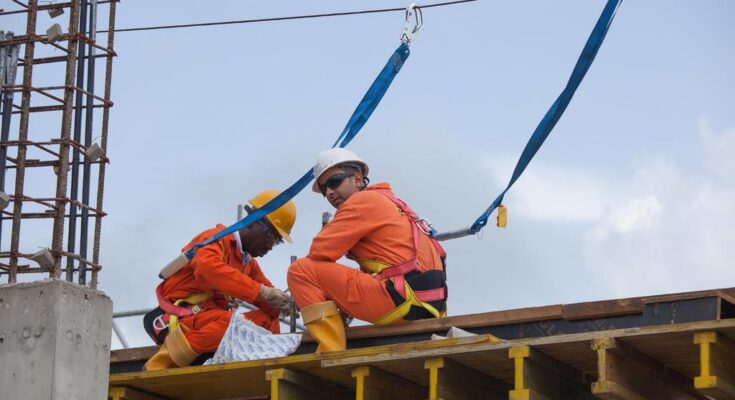The construction world is famed for its stunning engineering and architectural wonders. But let’s not forget, it also comes with risks – workers face danger every day.
Naturally, construction sites are full of potential hazards. Thankfully, though, we can greatly improve both safety and productivity on these sites by integrating health measures.
Let’s dive into four methods to make this happen.
Enhanced Worker Well-being Ensures Continuous Productivity
The health of construction workers isn’t just about their bodies. It’s also a matter of mind and emotions.
Regular check-ups, activities that ease stress, plus mental-health awareness programs can keep them performing at a top level on the job site.
Workers who are healthy, both physically and mentally, mess up less, which means fewer accidents.
Plus, they take off sick days much less often, so projects don’t get held up as much, either. So, looking after workers’ well-being is key to keeping building sites safe and running smoothly.
Training and Skill Development Reduces Accident Rates
A big chunk of construction site mishaps come from workers not knowing enough or lacking skills.
But if we put money into training programs, the number of accidents can drop significantly. How might these work?
It could be hands-on learning, practice situations, and even stepping into virtual reality. This would help staff get to know machinery better and take on risky tasks safely.
With proper training, a worker doesn’t only learn how to do their job right but also spots possible dangers before they happen, that’s important in keeping everyone safe.
Plus, when people are trained well, it means jobs get done more efficiently as well, which saves time and resources, too.
Incorporating Technology for Real-time Monitoring and Feedback
Thanks to tech advancements, we now have lots of tools and software for better construction site safety.
Take drones: They can oversee large work areas and find risks or structure problems that ground teams might overlook.
Wearable devices are also handy as they monitor a worker’s health stats, alerting if something’s not right. With these technologies in place, you can spot issues fast and fix them instantly.
This way, the job goes ahead smoothly without any surprise hurdles while keeping workers safe.
Strict Adherence to Safety Protocols and Regulations
Construction sites follow strict safety rules and regulations. They are unique to the challenges of this field. Following these isn’t just a law; it’s vital for everyone’s safety.
The OSHA’s Construction Site Signage Requirements is one such rule that insists on using certain signs that warn workers about dangers nearby.
By making sure all guidelines are followed closely and updating them often, we can dodge usual hiccups at construction spots and keep every worker safe.
Conclusion
The construction sector is known for risks, but great safety protocols can turn things around. Training and tech are key roles here – as well as sticking to the rules about being safe.
There are plenty of ways out there to make work sites safer and run smoother for employees in this field.
As we see changes in the industry, it’s vital not just to push forward with progress – workers’ lives should never be put online.













